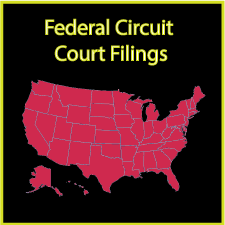How to Writ a Petition for Writ of Certiorari:
Section by Section Guide
This is a Supreme Court Petition Guide that walks you through the section by section requirements of a Petition for Writ of Certiorari. It is based on the 2020 Supreme Court Rules. However, this guide is based on a lay interpretation for the rules, and does not constitute legal advice. You can refer to this guide at your own risk and discretion.
SECTIONS PRIOR TO THE TABLE OF CONTENTS
Questions Presented
This is the first page of the petition that identifies the key legal question or questions that you seek to answer. You can have more than one question, although usually fewer questions demonstrate greater focus, and are preferred by the Court. You can have an introductory paragraph prior to stating the first question; however, the court requires that the questions begin on the first page. Therefore, if you do use an introductory paragraph, make sure that it is no longer than half a page, or about 120 words.
Parties to the Petition
This page is only required if there are too many parties to fit onto the cover. Thus, we usually don’t include this page if the cover names all the parties. You can use this page to identify the role of each of the parties and the lower court. E.g. plaintiff, defendant, appellant, appellee, etc.
Corporate Disclosure Statement
This statement, discussed in Rule 29.6, is necessary if the party you represent is a corporation. You must state whether there are any public companies that have a 10% or greater ownership stake in the party filing, or whether the company is a subsidiary of a company with public ownership of 10% or greater. You do not need to make any statement regarding parties that you don’t represent.
List of Proceedings Below
You must list the proceedings below in chronological order with the following data. Include state supreme courts (if applicable), appellate/circuit courts, trial courts, administrative courts, etc.
Name of the Court
Case Number
Case Title
Date of Opinion/Order
SECTIONS AFTER THE TABLE OF AUTHORITIES – OPENING SECTIONS
These opening sections are clerical in nature. They are mostly for the benefit of the clerk, to make sure that your petition is timely, that the Supreme Court has jurisdiction, and that the case can be properly filed with the court. Thus, these opening sections are not areas for great creativity. That being said, sometimes there are very complicated cases that might involve many parties, appeals, and lower court opinions. In such a case, this section can be used to help the court untangle the procedural history of the case.
Petition for Writ of Certiorari
Many documents have a one paragraph statement that previews what they are asking the court to do. For example, in a petition for writ of certiorari, a common statement here would be to have a section heading called “Petition for Writ of Certiorari” and then a short paragraph stating “petitioner XYZ requests that this court issue a writ of certiorari to reverse and remand the decisions below.” This is not a place for a lengthy introduction, or preview of the arguments that are to come. If you would like to do that, place an introduction in the Statement of the Case section.
Opinions Below
This is a listing of the opinions in the appellate courts and lower courts for which you seek review. (Yes this is essentially redundant with the List of Proceedings section.) It is traditional to state the name of the opinion, the court that issued the opinion, dated the opinion and state what page in the appendix this opinion can be found at. The appendix must include any opinions below for which you seek review. It is traditional to name the opinions of all the courts in the lower court hierarchy (e.g. Federal Court of Appeals and Federal District Court; or state supreme court, state appellate court, state trial court).
Jurisdiction
You should state the most recent opinion or order from which you are calculating your filing deadline and then state the proper statute to invoke jurisdiction. Most federal cases are invoked under 28 U.S.C. § 1254(1) and most state cases are invoked under 28 U.S.C. § 1257(a).
Constitutional and Statutory Provisions
You should state the critical statutes or constitutional provisions that your petition hinges upon, and you must include the verbatim text. You can include relevant excerpts and cut out non-relevant text. If the text is lengthy (e.g. more than two pages), we move that text to the appendix and list the statutes here in bullet point format. Sometimes, there are judicial rules of procedure or regulations involved, and those can be included here as well. Remember to modify section heading appropriately (e.g. if you have constitutional provisions but no statutes involved, the section heading would be “Constitutional Provisions Involved”.)
THE MAIN SUBSTANCE OF THE PETITION
Statement of the Case
This is where you will state the procedural history, the factual history, and the resulting decisions in the courts below. Some clients will opt to open up with an introduction where they can preview some of the arguments in the case. You can do that, but remember that you have another section called “Reasons for Granting the Petition” where you should place most of the arguments. This section is all about the facts which should be stated comprehensively and clearly. You should strive to minimize argumentation here so that the court can have a clean read of the facts as you have presented them without a lot of editorial comment. If there are facts that are supported by appendix material, you can add an appendix reference. You can also make references back to the lower court records, being careful to clearly identify which documents or lower courts you are referring to, the document title, docket number if available, date, and page number.
This is where you will state the procedural history, the factual history, and the resulting decisions in the courts below. Some clients will opt to open up with an introduction where they can preview some of the arguments in the case. You can do that, but remember that you have another section called “Reasons for Granting the Petition” where you should place most of the arguments. This section is all about the facts which should be stated comprehensively and clearly. You should strive to minimize argumentation here so that the court can have a clean read of the facts as you have presented them without a lot of editorial comment. If there are facts that are supported by appendix material, you can add an appendix reference. You can also make references back to the lower court records, being careful to clearly identify which documents or lower courts you are referring to, the document title, docket number if available, date, and page number.
In our view, the most common problem in petitions is that the statement of facts is not clear about what actually happened to precipitate the case. You have been living the case for so long, that you know all the facts. But the Court is new to your case and needs to be brought up to speed. In addition, many petitions do not properly discuss the opinions of the lower courts. Even if the lower courts say something that you completely disagree with, it is important that you discuss what they actually said. Remember, you are asking them to review the decisions below, so this Court must be exposed to the lower court opinions.
This is a very common organizational scheme for this section.
Statement of the Case
A. Introduction
B. Statement of Facts (that led to the case)
C. Procedural History (discussion of the lower court opinions)
1. Proceedings in the trial court
2. Proceedings in the appellate court
Reasons for Granting the Petition
This is the argument section, and where you can argue that the lower courts have erred and that there is an issue in this case that the Supreme Court should review. If the facts have been properly stated in the prior section, then you can connect the facts from your case to various legal arguments, legal precedents, case citations, statutes or other legal principles. It is typical in this section to argue that there is a conflict of law and the lower courts, and that this case would make an ideal vehicle to resolve that conflict. You would also argue that the legal questions are of importance even beyond the scope of the present case. Finally, you are probably going to argue that the lower court has made an error that is grievous and should be fixed.
A typical organization for the section would be (these are very generic section headings, so they should be adapted appropriately):
Reasons for Granting the Petition
I. The lower courts have erred in the opinions below
II. The lower courts have expressed conflicting views on this issue
III. This issue is of great legal/national significance
Conclusion
This is usually a very short section, something along the lines of: “For the foregoing reasons, this Court should grant this Petition for Writ of Certiorari.
Closing Signature Block
This is a text signature block. The court does not require an ink signature. The address block should contain the Council/Petitioner name (for pro se), firm, address, phone number, and email. We use the closing “Respectfully submitted,”
About the Supreme Court Press
The Supreme Court Press is a turnkey, full-service document preparation service for petitioner for a Writ of Certiorari, Responses in Opposition, Amicus Curiae briefs, Merits Briefs, Replies to Exceptions, and all your other filings to the United States Supreme Court. While lovely printed documents will never win your case, improperly prepared documents can certainly lose one! We take care of all your Supreme Court printing needs to free up your time to craft the winning legal arguments.



---Bryan-Krumm.png)


